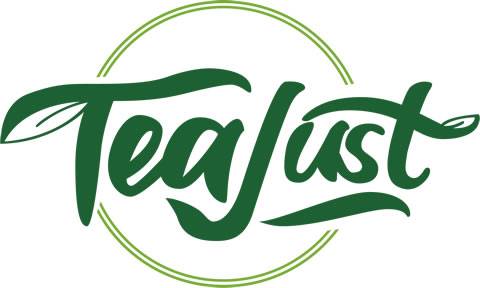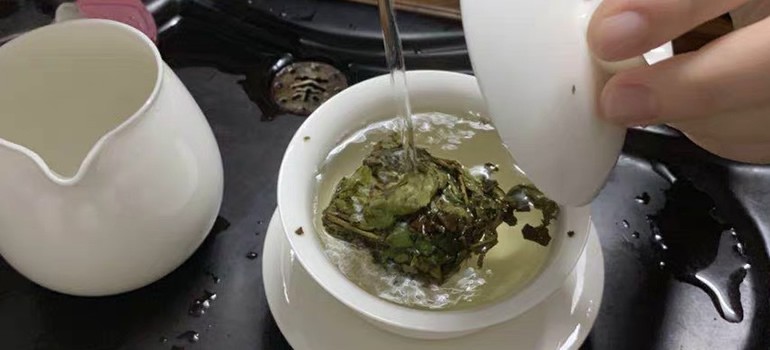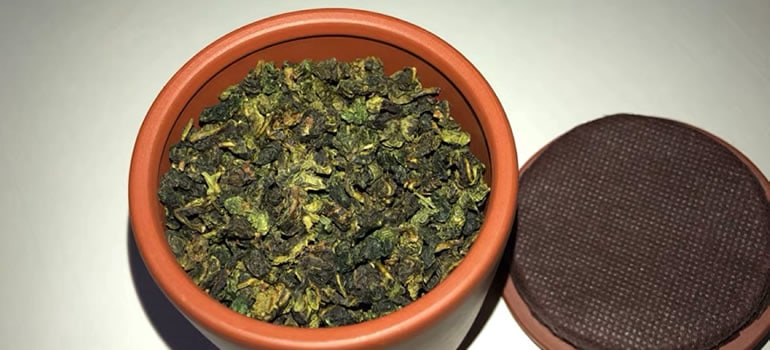People drink tea in combination with many different additives. One of which is milk.
If you are here, you probably drink your tea with milk as well, or you are entertaining the idea and would like to know the pros and cons of adding milk to your tea.
Continue reading below if you want to find all the details about what a little milk in your favorite cuppa can do for you.
Why Do People Add Milk to Their Tea?
Adding milk to your tea is not something strange. A lot of people do add milk to their tea.
The percentage of people who add milk to their tea will vary mostly due to cultural differences. For example, 72% of the British were found to add milk to their cup of tea. (Some people also suspect this number can be a lot higher.) While in the USA and Canada, adding milk to your tea is not a common practice.
But why do people add milk to their tea?
It can be speculated that after tea became more available to the general public, many people started adding it—and sugar—to their tea as a way to get some extra energy to help them throughout the long working days.
Both milk and sugar pack on some decent amount of energy even when consumed in small quantities.
Conversely, as a tea additive, milk may have been used way before tea even reached the Western civilizations.
The Dutch traveler and author Jean Nieuhoff observed—in 1655—that at the feast given by the Chinese emperor to the Dutch ambassadors, milk was added to their tea.
In another case, Tibetans, for example, have been adding butter to their tea, which can have a similar effect.
Nevertheless, milk may be used in combination with tea for the simple reason that it also tastes good.
Pros of Adding Milk to Tea
Higher Levels of Satiety
Milk has shown some very promising results in regards to appetite control.
One study compared two groups. The first group was consuming low amounts of dairy, and the second group was put on a high dairy consumption (almost twice as much as the first group). Both groups were following the same caloric deficit.
After 12 weeks, the results were very interesting. The high dairy group had similar weight loss results. However, the high-dairy group had higher levels of peptide tyrosine (PYY), which is a gut hormone responsible for the feeling of satiety. The high dairy group also consumed less dietary fat and reported feeling a lot more satisfied on average.
The data collected from 1352 participants showed a strong inverse association between milk consumption and the likelihood of obesity. The results showed that people that consumed whole-fat dairy products—including milk—were highly unlikely to be obese.
Another very large study in which 18,438 women participated found that dairy consumption was associated with less weight gain. And once again, high-fat dairy showed an inverse association with the risk of becoming obese.
It seems a little milk in your cup of tea can go a long way.
Rich in Nutrients, Vitamins, and Minerals
Milk is an excellent source of protein, especially casein, which comprises about 80% of the whole protein content in milk. Interestingly, casein has been associated with improved absorption of calcium and phosphorus, which milk also does contain.
The other 20% of the protein content in milk is whey protein. It is rich in BCAAs, it has been connected with lowered blood pressure, improved mood, and it has an excellent effect on developing and maintaining muscle mass.
Milk also has a very rich profile of fatty acids—when it comes to carbohydrates, you will find very low amounts of carbohydrates in the form of lactose.
Calcium is one of the minerals responsible for having healthy bones. A cup of whole milk contains about 28%, 22%, and 10% of the daily requirements for calcium, phosphorus, and potassium.
Milk—and dairy products in general—may be an excellent dietary source of easily absorbable calcium.
Some studies also suggest that there is a link between low calcium intake and bone fractures. Additionally, fermented milk products were also associated with a decreased incidence of bone fractures.
Milk is an excellent source of casein and whey proteins, which are beneficial to bone development.
Additionally, milk contains high amounts of vitamin D—up to 24% of the daily recommended amounts per cup of milk. Some types of milk may have even been fortified with additional amounts of vitamin D.
You will also find that milk contains IGF-1 (insulin-like growth factor-1), which is responsible for the growth and regeneration of cells.
The good things about milk don’t end here, though, it is also an excellent source of B12, B2, and phosphorus.
Improved Heart Health
High levels of cholesterol have been connected with a higher incidence of heart disease. There are two main types of cholesterol: high-density lipoprotein (also known as HDL), which is considered good cholesterol and low-density lipoprotein (or LDL), which is regarded as bad cholesterol.
It was found that consuming high-quality whole milk fat from milk may increase the good cholesterol (HDL).
For optimal health, high HDL levels and low LDL levels are preferred.
Grazing (pasture-raised) cows have been found to produce milk that has higher amounts of unsaturated fatty acids. Unsaturated fats are believed to be good for the health of the heart and the blood vessels.
Reduced Risk for Diabetes
Several experimental studies suggest and link the protein found in dairy products with decreased risk of type 2 diabetes.
The studies suggest that the potential benefits may be a result of the improved metabolic health and the changes in body composition.
Another study of more than 3,000 adults discovered that people who were getting their fatty acids mostly from dairy had a lower incidence of diabetes.
Decreased Risk of Chronic Disease
Multiple studies suggest that whole milk consumption may improve the levels of various risk factors—also referred to as metabolic syndrome—like insulin resistance, low HDL, high triglyceride levels, hypertension, inflammation, visceral obesity, and more.
One study that was carried out for ten years and included more than 1,800 participants found that people who consumed regular fat dairy had a lower risk of metabolic syndrome.
Another study found the same thing. After examining 15,105 adults, it was found that high-fat dairy had a beneficial effect on metabolic syndrome. However, no such association was found with low-fat dairy.
It Makes Tea Tastier
One of the questions that you may be wondering is, “Does milk make tea taste better?”
Adding just a few grams of milk to your tea can make tea taste better. It will have a creamier and thicker consistency. Milk can lower the bitterness of stronger teas like black tea.
Cons of Adding Milk to Tea
May Reduce the Levels of Antioxidants
Many of you may have heard different information about milk and how it can actually decrease the beneficial effects of tea.
For example: Black tea is rich in various polyphonic compounds. These are believed to have a beneficial effect on health, and a decrease in their bioavailability is recognized as undesirable.
One study found that adding 10 to 20 ml of different kinds of milk to a 200 ml cup of tea resulted in a reduced antioxidant capacity across the whole board. Skimmed milk was found to have the worst effect.
Another study found that the consumption of black tea without milk resulted in higher levels of circulating antioxidants in the body compared to not drinking tea and drinking the same tea but with milk.
A third study observed the same effects: the addition of milk to green tea and black tea reduced the tea’s antioxidant content. (The same effect was observed with honey, too)
One study took a slightly different approach.
Researchers wanted to find out if there is a difference in the oxidative stress and the overall antioxidant status between consuming tea with milk and tea without milk.
This is what they found. Although some markers were, indeed, lowered, the overall effects on the total plasma antioxidant activity were nonexistent.
In other words, black tea with milk had not lost its benefits.
As you can see, even though some studies suggest that adding milk to your tea may affect its antioxidant properties, the data is not conclusive. More information—based on larger-scale examinations—needs to be gathered.
Skin Problems
Interestingly enough, one study discovered a positive association between low fat or skimmed milk consumption and acne prevalence in teenagers. Other factors like total dairy consumption, total caloric intake, or BMI, fat intake did not show any significant effect.
One meta-analysis of 14 studies also found a positive correlation between acne and dairy consumption. The prevalence was higher in people consuming low-fat milk compared to the ones consuming whole milk.
It has also been discovered that certain foods like milk can make eczema worse in children and babies.
A recent study on more than a thousand people found that dairy products, including milk, had a negative correlation on skin conditions like rosacea. In other words, a little whole milk can make your skin look a lot healthier.
Lactose Intolerance
Unfortunately, one of the biggest problems with milk comes from the fact that many people are lactose intolerant.
Lactose intolerant people cannot digest lactose, which is a type of sugar found in dairy products, including milk. Consuming milk usually causes bloating, flatulence, stomachache, and diarrhea.
According to the current data, about 65% to 70% of people may be lactose intolerant. These numbers can vary significantly between the different racial groups. The lowest percentage of lactose-intolerant people is found within northern populations. This may be one of the reasons why the British drink their tea with milk so much.
With that being said, it is generally considered safe for people who are lactose intolerant to consume very small amounts of milk.
Bone Fractures
One study found that there was a higher incidence of osteoporotic bone fractures in countries where the population consumed more dairy. And another study linked high milk consumption to higher cases of bone fractures in women.
Acidity
It is believed that adding milk to your tea makes it more acidic.
This means that if you drink your tea with milk, first thing in the morning, it is recommended to grab something to eat in order to avoid acidity as it could affect your metabolism and even oral health.
It is believed that acidic foods below 4 pH can damage your teeth, and a pH of around 5.5 is considered safe.
Black tea has a pH of 4.9 to 5.5. Green tea is a lot more alkaline, with a pH ranging between 7 to 10. Herbal teas like chamomile and mint have a pH of 7. On the other hand, rosehip and blackberry teas are very acidic, with a pH of 2 to 3.
More Calories
The milk you put in your tea can be an unexpected source of hidden calories because people may not realize that they are consuming a lot more calories than they think they are.
For example, people usually add between 5 to 20 ml of milk to their tea. If you are using whole milk (3,25%), this would translate into anywhere between 3 and 12 kcal.
This may not sound like much, but some people may drink between 4 and 10 cups of tea per day, and these little numbers do tend to accumulate pretty fast.
What Milk Is Best to Add to Your Tea?
While working on my research, a logical question emerged. As expected, there are definitely some pros and cons to adding milk to your tea. However, what is the best milk that you should use?
Judging by the vast number of studies conducted in this field, it seems that whole grass-fed milk is the best milk to add to your tea.
Skimmed milk just does not have any significant pros going on for it. Much of the beneficial effects of milk may be as a result of the fatty acids in it.
The only advantage of low-fat milk is that it will be low in calories, and on paper, it should have retained its nutrients.
With raw milk consumption gaining popularity, it is only natural to discuss its potential pros and cons when used with tea.
Can You Put Raw Milk in Tea?
So can you put raw milk in your tea? Although you can put raw milk in your tea, this is not recommended. Raw milk poses a lot of health risks due to possible bacterial contamination. Adding raw milk to your tea could cause stomach problems, illness, and more.
This is why it is recommended to use pasteurized milk for your tea. The process of pasteurization will affect the taste qualities of milk, but it destroys the harmful bacteria that may be in it, making it a lot safer for consumption.
With that being said, raw milk definitely has certain benefits over pasteurized milk.
Pros of Adding Raw Milk to Tea
Raw Milk Has Superior Nutrient Properties
Raw milk is an excellent source of different vitamins like vitamins A, C, E, K2, and more.
All of these make raw milk an excellent food to keep your bones, teeth, and skin strong and healthy.
For example, milk from grass-fed cows tends to have up to 500% more CLA. CLA, or conjugated linoleic acid, is an omega-6 fatty acid—is considered a beneficial trans-fatty acid.
It is associated with improved metabolic health, lower risk of diseases.
It is also associated with weight loss; nevertheless, the official data is inconclusive.
Raw Milk Is an Excellent Probiotic
It contains live enzymes like lactase, which makes raw milk easier to digest, and it also improves digestion.
In addition to that, raw milk contains no additives.
Lowered Incidence of Asthma and Allergies
Interestingly enough, one large-scale cross-sectional study of more than 14,000 children found a negative association between raw farm milk consumption and asthma and allergies.
Raw Milk Tastes Better
Undoubtedly, one of the main pros of using raw milk is its taste qualities.
The process of homogenization and pasteurization all tend to affect milk’s taste—it just feels different. In contrast, raw milk, especially from grass-fed and raised animals, is richer, sweeter, and full-bodied.
This holds true even for dairy products made from raw milk, and anyone who has tasted a raw milk cheese can attest to that.
Cons of Adding Raw Milk to Tea
Raw Milk Can Contain Bacteria
The problem with raw milk is that, according to the FDA, it can be extremely easy to contaminate it with different bacteria like E.Coli, Listeria Campylobacter, and Salmonella.
This makes raw milk especially dangerous for people who have compromised or weak immune system.
These pathogens are hazardous and can cause many foodborne illnesses.
In fact, because of the potential danger in some states in the U.S., raw milk is banned, and it is illegal to sell it.
There Is a Higher Chance of Illness Outbreak
The data collected between 1998 and 2011 suggests that about 79% of the illness outbreaks related to dairy products were associated with raw milk and cheese consumption.
And to no surprise, these cases were higher in the states where selling raw milk is legalized.
According to the CDC, the consumption of raw milk products was associated with a 150% higher incidence of outbreaks.
Raw Milk Is Also Very Quick to Spoil.
Raw milk can spoil within hours, while in comparison, opened pasteurized milk can last between 4 to 7 days if refrigerated.
And unopened UHT milk can last up to six months when refrigerated, and up to 4 weeks at room temperatures.
Which Teas Go Well With Milk?
When it comes to drinking one’s tea, it is all down to personal choice and preference. There are no rules and laws regarding whether or not you should add milk to your tea.
But then again, certain types of tea go well with milk while others don’t.
The general rule of thumb is that robust, astringent, and stronger teas go well with milk, like black tea, masala chai, and hojicha tea.
Blended teas can also be served with milk, like the English Breakfast, Irish Breakfast, Yorkshire tea, Earl Gray, and many others.
Do Herbal Teas Go Well With Milk?
Herbal teas do go well with milk.
Rooibos is one of the best examples of a herbal tea that goes well with milk. Its strong and full-bodied taste lends itself pretty nicely to blending and being consumed with milk.
Honeybush is another herbal tea that can be consumed with milk. It has a mild nuttier flavor that goes well with milk.
And lastly, some people even enjoy chamomile tea with a little milk, and it is one of the best ways to make chamomile taste even better.
Which Teas Should Not Be Served With Milk?
Milder and more delicate teas should not be served with milk. Teas like green tea, white tea, jasmine tea, mint tea, oolong, and pu’erh tea should not be served with milk as they can get overpowered by the milk’s flavor.
Are There Other Alternatives to Milk?
With that being said, cow’s milk is not the only type of milk one can use to add to their tea.
Nowadays, we have access to a wide array of different milk substitutes.
Almond Milk
Almond milk is generally speaking lower in calories compared to cow’s milk. Since it is plant-based milk, it does not contain any lactose.
Certain people may be allergic to almonds and should avoid drinking almond milk too.
Almond milk is very low in protein. It is also low in certain nutrients and vitamins like calcium, Vitamin A, and D—hence why many manufacturers add them during production.
Cashew Milk
Cashew milk may cause allergic reactions in some people.
Overall it contains a low amount of fat and calories. However, it is also low in protein and certain nutrients.
Coconut Milk
Coconut milk does not contain any protein but is fairly high on fats. In addition to that, coconut milk does not contain calcium and vitamin A or D.
On the other hand, coconut milk is a safe option for people with nut allergies.
Hemp Milk
Hemp milk is plant-based and has a unique earthy and nutty taste. It makes for a fairly good alternative to cow’s milk as it is also creamy.
It is low in calories and carbohydrates.
Unfortunately, it is also low in protein but not as low as other plant-based types of milk.
It has small amounts of calcium and iron. Some types of hemp milk can additionally be fortified with vitamins A, D, and B12.
Oat Milk
If you are looking for another alternative to cow’s milk that is also dairy-free and suitable for vegans, oat milk is a good alternative.
Unfortunately, as a result of the manufacturing process, oat milk usually lacks many of its original nutrients—as a result, many manufacturers fortify it with different nutrients like vitamins A, D, B12, calcium, potassium, iron, and more.
Oat milk contains fiber, which may be beneficial for some people.
Certain types of oat milk will contain gluten and varying amounts of sugar, which may cause potential health problems.
Quinoa Milk
Quinoa milk is another vegan-friendly alternative. Quinoa is a seed, which means that it is usually gluten-free. However, it may be manufactured in factories that do process other foods which may contain gluten.
It is low in fat, carbohydrates, and even protein—this makes quinoa milk very low in calories.
Rice Milk
Out of all alternatives to cow’s milk, and including cow’s milk, rice is the least allergenic.
Rice milk contains very low amounts of protein and high amounts of carbohydrates. Because of that, it contains very high amounts of calories, almost as much as whole cow’s milk.
Some manufacturers also fortify their rice milk with vitamin A, D, and calcium to improve its nutrient content.
Soy Milk
Soy milk contains comparable amounts of protein to cows milk, but its structure is different. It has lower calories, fat, and carbohydrates.
Soy is a plant, so it does not contain any lactose or cholesterol.
Due to the lower amounts of certain nutrients, soy milk bey is frequently fortified with calcium, vitamin A, D, and B12.
On the other hand, soy contains certain compounds known as isoflavones, which can mimic estrogen when consumed.
Additionally, almost all of the soy produced in the USA is GMO.
Some data suggests soy may interfere with male hormones and the thyroid function, and even cause cancer, while other studies did not find such correlations. Overall, soy remains a very controversial topic.
Resources:
- https://www.express.co.uk/news/uk/716253/British-people-cup-of-tea-preference-milk-no-sugar-study-revealed
- https://www.quora.com/What-percentage-of-British-people-put-milk-in-their-tea
- https://www.quora.com/Why-do-some-people-put-milk-in-tea
- https://www.quora.com/Do-people-drink-tea-with-milk-in-the-US
- https://en.wikipedia.org/wiki/Butter_tea
- https://books.google.bg/books?id=8i4qDwAAQBAJ&pg=PA32&lpg=PA32&dq=Jean+Nieuhoff+tea&source=bl&ots=oLp8kznRaM&sig=ACfU3U0VIC5guNiJ8k6-dAtmjtX6L0sZwQ&hl=en&sa=X&ved=2ahUKEwiFpMKAwKPoAhUDURUIHUPOB_4Q6AEwAHoECAkQAQ#v=onepage&q=Jean%20Nieuhoff%20tea&f=false
- https://www.quora.com/What-are-the-historical-reasons-Britons-add-milk-to-tea
- https://www.englisch-hilfen.de/en/texte/drink_tea.htm
- https://www.healthline.com/health/hdl-vs-ldl-cholesterol
- https://daa.asn.au/smart-eating-for-you/smart-eating-fast-facts/nourishing-nutrients/the-ins-and-outs-of-unsaturated-fats/
- https://nutritiondata.self.com/facts/dairy-and-egg-products/69/2
- https://www.webmd.com/skin-problems-and-treatments/eczema/ss/slideshow-top-eczema-triggers
- https://www.healthline.com/nutrition/soy-good-or-bad
- https://www.healthline.com/health/milk-almond-cow-soy-rice
- https://www.healthline.com/nutrition/hemp-milk
- https://www.healthline.com/nutrition/oat-milk
- https://www.glutenfreesociety.org/is-quinoa-a-safe-gluten-free-food-alternative/
- https://en.wikipedia.org/wiki/Lactose_intolerance
- https://ghr.nlm.nih.gov/condition/lactose-intolerance
- https://www.healthline.com/nutrition/9-fixes-for-weight-hormones
- https://www.healthline.com/nutrition/whole-vs-skim-milk
- https://acupuncturenutrition.com/dont-put-milk-in-your-tea/
- https://www.amazing-green-tea.com/tea-with-milk.html
- https://www.reddit.com/r/explainlikeimfive/comments/4euinp/eli5_why_are_people_so_passionate_about_raw_milk/
- https://www.farmersalmanac.com/is-raw-milk-safe-to-drink-11867
- https://www.stilltasty.com/fooditems/index/17691
- https://qz.com/740959/science-has-found-a-way-to-extend-the-shelf-life-of-cold-milk-300/
- https://www.huffpost.com/entry/raw-milk-outbreaks_n_5120543?1405610125
- https://www.healthline.com/nutrition/conjugated-linoleic-acid
- https://www.sheknows.com/health-and-wellness/articles/1040731/the-pros-and-cons-to-drinking-raw-milk/
- https://www.californiateahouse.com/tea-blog/tea-with-milk
- https://steepster.com/discuss/13584-herbal-teas-to-drink-with-milk
- https://www.thespruceeats.com/which-teas-take-milk-and-sugar-766328
- https://www.quora.com/Which-kind-of-tea-should-we-drink-if-we-want-to-mix-it-with-milk
- https://www.summitmedicalgroup.com/library/pediatric_health/hhg_cows_milk/
- https://coffeeandteacorner.com/which-teas-go-with-milk/
- https://milk.procon.org/top-10-pro-con-arguments/
- https://www.healthline.com/health/is-milk-bad-for-you
- https://www.healthline.com/nutrition/foods/milk
- https://food.ndtv.com/food-drinks/should-you-be-adding-milk-in-your-tea-1783418
- https://www.healthline.com/health/food-nutrition/is-tea-acidic
- https://www.teachat.com/viewtopic.php?t=8330




